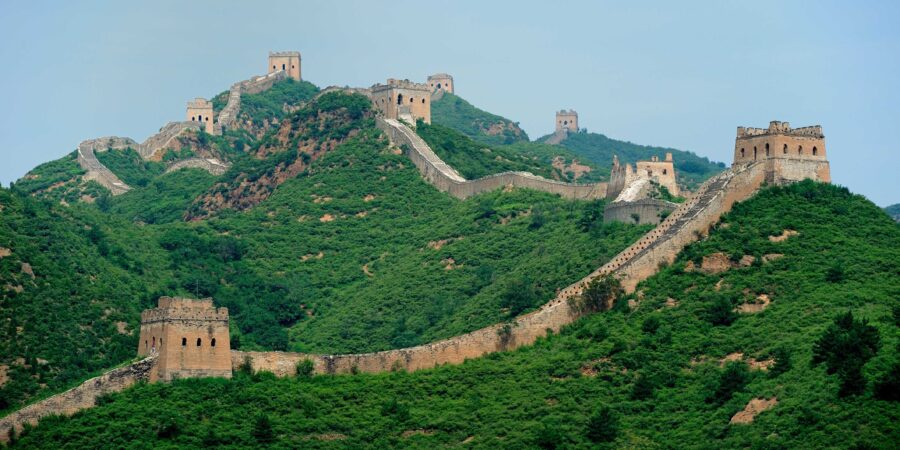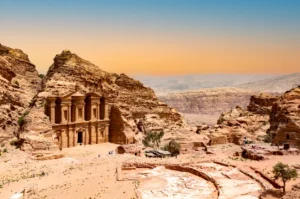When you think of China, one of the first images that comes to mind is the Great Wall of China—a monumental feat of engineering, a symbol of cultural resilience, and a timeless testament to human ambition. Stretching over thousands of miles, this ancient marvel weaves its way across rugged mountains, rolling hills, and vast deserts, offering visitors not only a glimpse into China’s storied past but also an immersive experience in one of the world’s most iconic landmarks.
A Journey Through History
The Great Wall of China wasn’t built in a day. In fact, its construction spanned several dynasties, each adding layers of history and significance to its stone and brick structure. Initially constructed as a defense mechanism against northern invasions, the Wall evolved over centuries. Early sections, built as early as the 7th century BC, were expanded significantly during the Qin Dynasty under Emperor Qin Shi Huang. Later dynasties, including the Han, Sui, and particularly the Ming Dynasty, reinforced and extended the Wall to protect the empire’s vast frontiers.
Walking along the Great Wall, you can almost feel the whispers of history—the footsteps of ancient soldiers, the echo of battle strategies, and the relentless determination of emperors who envisioned a unified China. Each brick and stone tells a story of human perseverance, sacrifice, and the relentless pursuit of security and sovereignty.
Architectural Marvel and Engineering Feat
From an engineering perspective, the Great Wall is nothing short of extraordinary. Constructed using locally available materials—ranging from rammed earth to stone blocks and bricks—the Wall’s design varied according to regional terrain and available resources. In some areas, watchtowers and fortresses punctuate the landscape, serving both as military outposts and as symbols of administrative power. These towers were strategically placed to facilitate communication and signal troop movements, underscoring the sophisticated military tactics of the time.
Modern engineering marvels pale in comparison to this ancient construction, which was built with rudimentary tools yet managed to stand the test of time. The Great Wall’s sheer scale and complexity make it one of the world’s most impressive architectural achievements, drawing historians, engineers, and curious travelers alike.
The Cultural and Symbolic Significance
Beyond its physical structure, the Great Wall of China holds deep cultural significance. For centuries, it has symbolized the unity and strength of the Chinese people. The Wall is not merely a barrier against invaders—it represents the collective spirit of a nation that has withstood countless adversities. In Chinese literature, art, and folklore, the Great Wall is a recurring motif, embodying the themes of resilience, perseverance, and national pride.
Local legends abound, weaving mystical tales of guardian spirits, heroic sacrifices, and the supernatural. Some stories even suggest that the Wall is alive, a sentient guardian that has witnessed the rise and fall of empires. For many Chinese, the Great Wall is more than just a tourist attraction; it is a living piece of their heritage, a constant reminder of the sacrifices made to ensure the nation’s survival.
Experiencing the Great Wall Today
Visiting the Great Wall is an experience that transcends the ordinary. Whether you’re an avid history buff, an architecture enthusiast, or simply someone who appreciates natural beauty and human achievement, the Great Wall offers something for everyone. There are numerous sections open to tourists, each providing a unique perspective on the Wall’s vast expanse and diverse environments.
Popular Sections to Visit
- Badaling: Perhaps the most famous and frequently visited section, Badaling offers well-preserved structures and sweeping panoramic views. It’s easily accessible from Beijing, making it a favorite for both local and international tourists.
- Mutianyu: Known for its scenic beauty and restored watchtowers, Mutianyu provides a slightly less crowded alternative to Badaling, with cable cars and hiking trails that let you experience the Wall up close.
- Jiankou: For the more adventurous, Jiankou offers a rugged, unrestored segment of the Wall that challenges hikers with its steep inclines and breathtaking, albeit precarious, paths. This section is perfect for those who want to connect with the Wall’s ancient, raw energy.
Tips for Travelers
- Plan Ahead: The Great Wall can be crowded, especially during peak tourist seasons. Booking tours or visiting early in the morning can help you avoid the crowds.
- Dress Appropriately: The weather can be unpredictable, and the terrain is uneven. Comfortable walking shoes, layered clothing, and sun protection are must-haves.
- Respect the History: While it might be tempting to climb on every brick, remember that the Wall is a historical monument. Respect the site by following local guidelines and preserving its integrity.
SEO-Optimized Insights: Why the Great Wall of China Continues to Captivate the World
In the realm of SEO and digital content, the Great Wall of China remains a high-value keyword that attracts millions of searches from travelers, historians, and educators alike. When crafting content around this monumental structure, it’s important to weave in keywords naturally:
- Great Wall of China history: Highlight the Wall’s centuries-old history and its role in protecting Chinese dynasties.
- Travel guide Great Wall of China: Provide practical tips, maps, and insights for tourists planning a visit.
- Ancient wonders of the world: Emphasize the Great Wall’s status as a UNESCO World Heritage site and one of the world’s most recognized historical landmarks.
- China tourism and cultural heritage: Discuss how the Wall fits into the broader tapestry of Chinese culture and history.
Using these keywords thoughtfully not only boosts search engine rankings but also ensures that the content resonates with readers looking for genuine, well-researched information. The goal is to provide valuable insights that enrich the reader’s understanding while seamlessly integrating SEO elements.
The Great Wall in Modern Culture and Media
In recent years, the Great Wall of China has enjoyed a resurgence in popular culture. Films, documentaries, and travel blogs continue to capture its mystique, drawing parallels between its ancient origins and modern-day China. Social media platforms are flooded with breathtaking photos and personal stories from travelers who have experienced the Wall firsthand. This global fascination is a testament to its enduring allure—whether as a symbol of human achievement or as a backdrop for reflective moments on history, culture, and identity.
Many contemporary artists and authors draw inspiration from the Wall, incorporating its imagery into novels, paintings, and even digital art. This blend of ancient history with modern creativity ensures that the Great Wall remains not just a relic of the past but an evolving part of China’s cultural narrative.
Conservation and Future Challenges
As one of the most visited historical sites in the world, the Great Wall of China faces modern challenges that threaten its preservation. Weathering, erosion, and the impact of mass tourism have taken a toll on its structure in various locations. Efforts by both local governments and international organizations are underway to restore and maintain this ancient marvel, ensuring that it remains intact for future generations.
Conservation projects focus on sustainable tourism, using modern technology to monitor and repair damaged sections while preserving the Wall’s original materials and construction techniques. The balance between making the site accessible to the public and protecting its historical integrity is delicate, but it is a challenge that China is committed to meeting.
Personal Reflections: The Magic of the Great Wall
I remember my first visit to the Great Wall of China as a surreal encounter with history. Standing atop its ancient ramparts, with the wind whispering stories of centuries past, I felt a profound connection to the people who built it. The experience wasn’t just about marveling at its sheer size or architectural complexity—it was about feeling the pulse of history beneath my feet.
Every step along the Wall was a journey into a world where time seemed to slow down. It’s one thing to read about ancient Chinese military strategies or the lives of emperors, but it’s another entirely to walk the path where these historical events unfolded. That intimate encounter with the past is something that stays with you long after you’ve left.

Embracing the Legacy of the Great Wall
The Great Wall of China stands as a powerful reminder that history is not static—it is a living, breathing narrative that evolves with every generation. For modern travelers, historians, and curious minds, the Wall offers endless opportunities to explore, learn, and reflect. It challenges us to think about the importance of heritage and the ways in which we honor and preserve our shared history.
As you plan your journey to visit the Great Wall of China, take the time to delve into its rich past, appreciate its architectural splendor, and embrace the cultural stories that make it so much more than just a tourist destination. Whether you’re hiking along its rugged paths, photographing its stunning vistas, or simply sitting quietly to absorb its ancient energy, the Great Wall invites you to become a part of its ongoing story.
Video Wonder of Ancient China
Final Thoughts
In a rapidly modernizing world, the Great Wall of China remains a steadfast symbol of human ingenuity and endurance. Its ancient stones serve as a bridge connecting the past with the present, offering lessons in resilience, unity, and the power of collective human endeavor. For anyone seeking an authentic, immersive travel experience in China, the Great Wall is not just a must-see landmark—it’s a living monument that encapsulates the spirit of a nation.
By blending history, culture, and modern tourism insights, this comprehensive look at the Great Wall of China aims to provide you with all the information you need to appreciate its grandeur fully. So pack your bags, put on your walking shoes, and get ready to explore one of the world’s greatest wonders. The Great Wall awaits, ready to share its secrets and inspire awe in every visitor who steps onto its ancient path.
Whether you’re reading this as part of your travel planning or simply out of curiosity about one of the world’s most famous landmarks, remember that the Great Wall of China is more than just an old structure—it’s a journey through time, a tribute to human determination, and a beacon of cultural heritage. Explore it, respect it, and let its timeless beauty remind you that the past is never truly gone; it lives on in every stone and every story etched into the wall.


